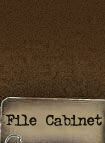
Battle Relic: Debris of
German homes destroyed during Allied
bombing raids and the Soviet battle
of Berlin, Germany, in World War II.
Finding place: Debris mount
("Trümmerberg" in German) at
Anti Aircraft Tower ("Flakturm"
in German) III in the Volkspark
Humboldthain, Berlin, Federal
Republic of Germany.
GPS location: 52.547238°N
13.384961°E
Introduction: Flak towers
were tall concrete structures,
above-ground, anti-aircraft gun
blockhouse towers constructed in the
cities of Berlin, Hamburg, and
Vienna starting in 1940.
Other cities that used flak towers
included Stuttgart and Frankfurt.
They were used by the Nazi Air Force
and Air Defense ("Luftwaffe"
in German) to defend against Allied
air raids on these cities during
World War II. The towers also served
as air-raid shelters for tens of
thousands of people and to
coordinate air defense.
Third Reich and battle of Berlin
After the British Royal Air Force
raid on Berlin in 1940, Adolf Hitler
ordered the construction of three
gigantic Anti-Aircraft ("Flak"
in German, from Flugzeugabwehrkanone;
aircraft defense canon) towers
to defend the capital from air
attack. Each tower had a radar
installation with a retractable
radar dish.
The flak towers, in which Adolf
Hitler was in involved in the
designing, were constructed in just
six months.
With concrete walls up to eleven
feet thick, Flak towers were
considered to be invulnerable to
attack from the amount of explosives
delivered by Allied bombs at the
time.
The towers were able to fire off
eight thousand rounds per minute
from their multi-level guns in a
360-degree field of fire. However
only the five inch guns had
effective range to defend against
the British and American Air Forces
heavy bombers. The three Flak towers
around the outskirts of Berlin
created a triangle of anti-aircraft
fire that covered the centre of
Berlin where the Nazi government was
seated; known as "The Citadel".
The Flak towers were also designed
to use the above-ground bunkers as
civilian air raid shelter, with room
for 10,000 civilians with a hospital
ward inside. During the Battle of
Berlin, the towers formed their own
communities, with up to 30,000
Berliners sheltering in one tower
during the battle. The towers were
some of the last places to surrender
to Soviet troops.
The Soviets, during their Battle for
Berlin, found it difficult to cause
significant damage on the Flak
towers, even with some of their
largest guns, such as the 203 mm
howitzers. They mainly maneuvered
around the towers, and eventually
sent in infantry to suppress the
towers. Unlike much of the rest of
the city of Berlin, the towers
tended to be fully stocked with
ammunition and supplies, and the gun
crews even used their anti-aircraft
20 mm cannons to defend against
assault by ground units.
After the war was lost, the
demolition of the towers was in most
cases not feasible and many remain
to this day.
Flakturm III – Volkspark
Humboldthain, Berlin
The Flak tower in Berlin's
Humboldthain neighborhood,
designated "Flakturm III", was
partially demolished after the war
and only one side remains visible
while the other side of the tower
has been covered and filled op with
debris from the homes and buildings
of the city.
The mount thus created consists only
of debris that could not be used for
rebuilding the city. Immediately
after hostilities ceased, teams of
so-called "Trümmerfrauen"
(debris women) started sorting our
building materials which could be
reused. Debris unfit for
construction purposes was brought to
the debris mounts in narrow gauge
train cars.
This created a hill which today
gives access to the highest point of
the former Flak tower.
The interior can be visited by
appointment with the
Berliner Unterwelten eV. |













